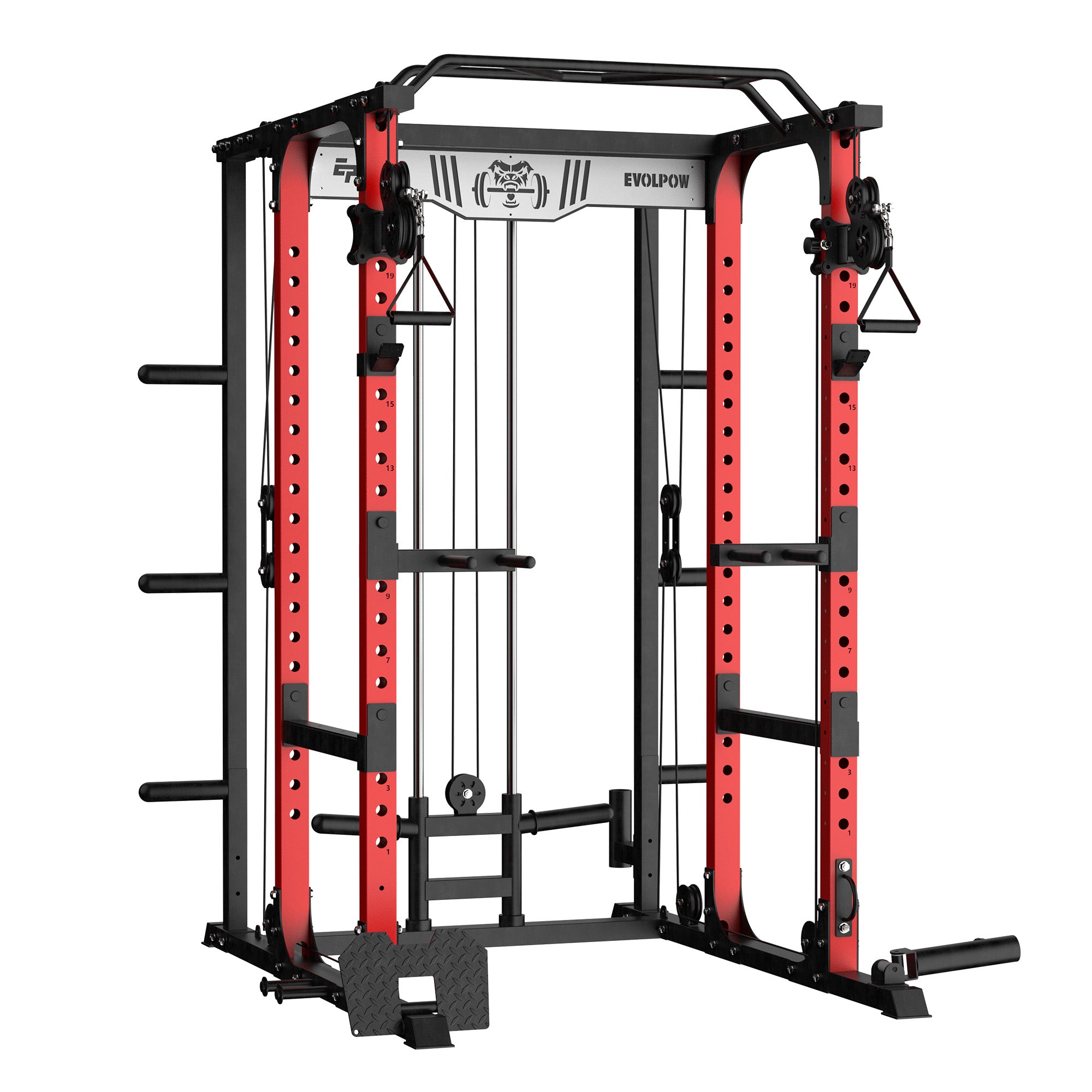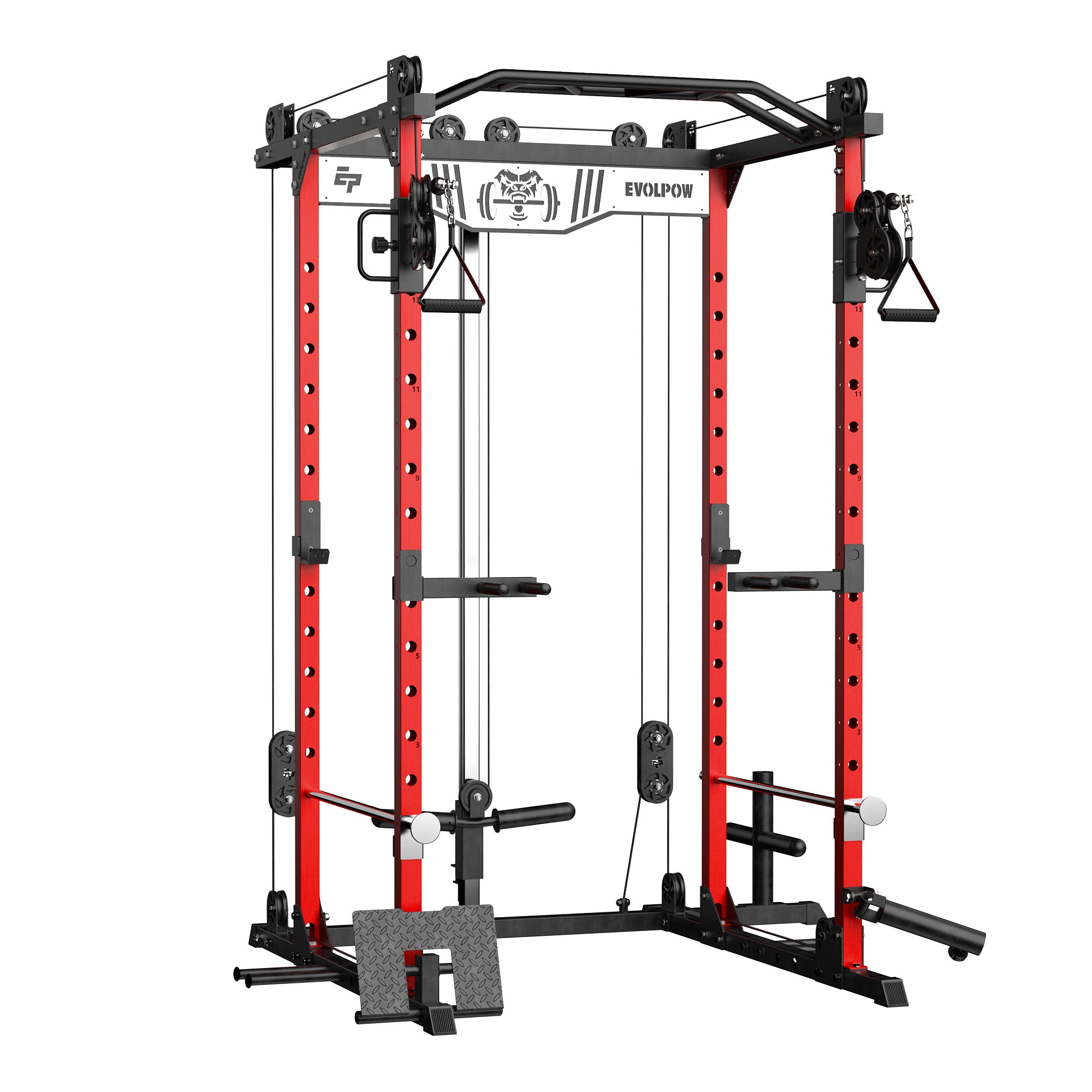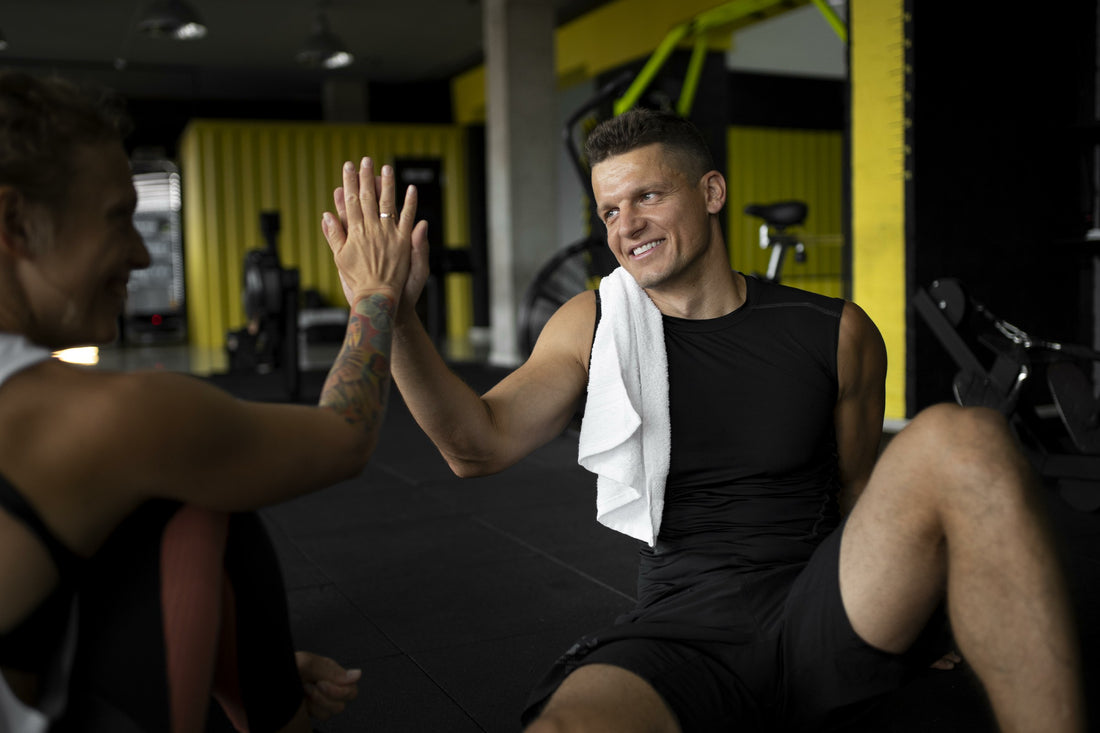Workouts in a home gym, whether based on improvisation or following online programs, offer convenience and flexibility. However, what's often left unsaid is the ever-present risk of injury, especially if you have pre-existing conditions such as weak joints, heart disease, high blood pressure, arthritis, kidney disease, or cancer. Common workout injuries include pulled or strained muscles, knee injuries, shin splints, sprained ankles, shoulder injuries, wrist sprains or dislocations, and overuse injuries like tendinitis. Fortunately, these injuries can be avoided by following some simple steps to ensure an effective and safe workout routine with home gym equipment. Here are some tips to help you stay injury-free while exercising at home:
Warming Up Before Workouts

Starting every workout with a warm-up is important as it helps you ease into your exercise session. A proper warm-up prepares your body by bringing up slowly its temperature and increasing blood flow to your muscles and organs. Additionally, warming up improves the range of motion in your joints, reduces muscle soreness, and lowers the risk of injury.
Most warmups don’t take very long, 5 minutes top. Here is a detailed warm-up sequence to get you started, it's separated into 6 parts:
First Part:
- Marching in Place (1-2 minutes):
- Start by marching on the spot.
- Gradually increase your pace to raise your heart rate.
- Incorporate arm movements by pumping your arms up and down in rhythm with your steps, keeping your elbows bent and your fists relaxed.
Second Part:
- Marching Forward and Backward (1-2 minutes):
- March forward for four steps, then march backward for four steps.
- Continue to pump your arms as you move, maintaining a steady rhythm.
- Focus on maintaining good posture with your back straight and shoulders relaxed.
Third Part:
- Heel Digs (1-2 minutes):
- Stand with your feet hip-width apart.
- Alternate placing your heels in front of you, one at a time, while keeping the toes pointed up.
- As you dig your heel into the ground, punch out with the opposite arm.
- Maintain a slight bend in the supporting leg to avoid strain.
Fourth Part:
- Knee Lifts (1-2 minutes):
- Stand tall and lift one knee to hip level, then lower it and repeat with the other leg.
- Swing your opposite arm forward as you lift each knee to enhance coordination.
- Keep your core engaged to support your lower back.
Fifth Part:
- Shoulder Rolls (1 minute):
- Stand with your feet shoulder-width apart.
- Roll your shoulders forward in a circular motion for 30 seconds.
- Reverse the direction and roll your shoulders backward for another 30 seconds.
- This helps to release tension and improve blood flow to the shoulder muscles.
Sixth Part:
- Knee Bends (1-2 minutes):
- Stand with your feet shoulder-width apart and your hands on your hips or extended in front of you.
- Slowly bend your knees, lowering your body into a half-squat position.
- Ensure your knees do not extend past your toes and keep your back straight.
- Return to the starting position and repeat.
By following this detailed warm-up routine, you'll effectively prepare your body for more intense exercises, enhancing your overall workout performance and reducing the likelihood of injuries.
Personalize your workout

When following a workout from a magazine, video, app, or general online program, remember that these routines are designed for the general population. To make the workout suitable for your fitness level, you may need to modify or regress the exercises. This might include taking more breaks or extending your rest periods beyond what is suggested.
Strength training should not be painful. The motto "no pain, no gain" does not apply here. Exercising in a way that causes pain is unhealthy and can lead to various musculoskeletal problems, both immediately and in the long term. If you experience pain during a specific exercise, stop immediately and seek professional advice.
What’s more, do make sure you drink enough, but not too much water before and during your workout. Inadequate hydration might compromise blood flow to the muscles you're working, which may increase your susceptibility to injury.
Cooling down after exercising

Cooling down after exercise is an essential part of any workout routine. It helps to gradually lower your heart rate, preventing dizziness that can occur if your exercise is stopped abruptly. Secondly, gentle stretching during the cool-down phase can improve overall flexibility and aid in muscle recovery. It helps to realign muscle fibers and reduce tension.
Therefore, proper cool-down reduces the risk of injury by ensuring muscles and joints gradually return to their normal state, it is a safe and effective transition necessary to let you get back to a state of rest. Effective strategies are low-intensity exercise, stretching, hydration, breathing exercises etc.
In conclusion, taking the proper precautions during your home workouts is crucial for preventing injuries and ensuring long-term fitness success. By incorporating a thorough warm-up routine, personalizing your exercises to match your fitness level, and adhering to safe cool-down practices, you can significantly reduce the risk of common workout injuries. Following these steps not only enhances your overall workout performance but also promotes a safe and sustainable exercise regimen, helping you to achieve your fitness goals at home without the setback of injuries.
Q&A
Q: When shall I seek medical attention?
A: if you are experiencing a sudden pressure in the chest, severe shortness of breath or unusual sweating, and these symptoms don’t go away after rest, you need to seek immediately medical attention.
Q: What should I wear when training?
A: It depends on the type of workout and equipment used. For example, for static exercises like marching or lunges you can wear loose-fitting clothes. While clothes that are fitted and have stretchable fabrics are more suitable for Pilates and Yoga.
Q: What exercise has the highest injury risk?
A: Potentially harmful exercises include bouncing while stretching, standing toe-touches, full squats, straight-legged sit-ups and double leg raises. To prevent them at home you need to cautiously follow the guideline and modify your exercise plan according to your capacity.
References:
https://www.nhs.uk/live-well/exercise/how-to-warm-up-before-exercising/
https://www.parkwayeast.com.sg/health-plus/article/how-to-avoid-injuries-while-doing-home-workouts
https://www.everydayhealth.com/fitness/choosing-workout-clothes.aspx
https://darebee.com/warmup-and-stretching.html






